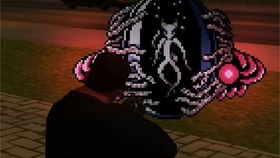
Pictures of Bites from a Brown Recluse
Understanding the bite of a brown recluse spider is crucial for anyone who might encounter this venomous arachnid. With their distinctive appearance and potentially harmful bites, these spiders can cause significant discomfort and, in some cases, severe health issues. In this article, we will delve into the details of brown recluse bites, including their appearance, symptoms, and treatment options. Let’s start by examining some pictures of these bites to get a clearer picture of what to look out for.
What Does a Brown Recluse Bite Look Like?

Brown recluse bites can be quite distinctive, and recognizing them is the first step in seeking appropriate treatment. Here are some key features to look for in a brown recluse bite:
| Feature | Description |
|---|---|
| Wound Appearance | A small, white, painless sore that may be surrounded by a red halo. |
| Healing Process | Delayed healing, often taking weeks or months to resolve. |
| Swelling and Redness | Localized swelling and redness around the bite area. |
| Blister Formation | A fluid-filled blister may develop at the bite site. |
These features can vary from person to person, and not all brown recluse bites will present with all of these symptoms. However, if you notice any of these signs, it’s essential to seek medical attention promptly.
Understanding the Symptoms

While the initial bite may not be painful, the symptoms of a brown recluse spider bite can develop within hours or even days. Here are some common symptoms to watch out for:
-
Pain at the bite site, which may be mild at first but can become severe.
-
Swelling and redness around the bite area.
-
Itching and a burning sensation.
-
Red streaks or lines extending from the bite site.
-
Chills, fever, and nausea.
-
In severe cases, muscle aches, joint pain, and a rash may occur.
It’s important to note that while most brown recluse bites are not life-threatening, they can lead to serious complications, especially in individuals with weakened immune systems or those who are elderly or pregnant.
Diagnosis and Treatment

Diagnosing a brown recluse spider bite can be challenging, as the symptoms can be similar to those of other conditions. However, healthcare professionals can often identify a brown recluse bite based on the appearance of the wound and the patient’s history of exposure to these spiders.
Here are some common treatment options for brown recluse spider bites:
-
Wash the bite area with soap and water to prevent infection.
-
Apply a cool, wet compress to reduce swelling and pain.
-
Take over-the-counter pain relievers, such as ibuprofen or acetaminophen, to manage pain and inflammation.
-
Seek medical attention if symptoms worsen or if you have a weakened immune system.
-
In severe cases, your doctor may prescribe antibiotics or other medications to treat infection or manage symptoms.
Prevention is the best way to avoid a brown recluse spider bite. Here are some tips to help you reduce your risk:
-
Keep your home clean and clutter-free, as brown recluse spiders prefer dark, undisturbed areas.
-
Inspect your clothing and bedding for spiders before use.
-
When traveling, be cautious when placing your luggage or belongings on the ground.
-
Keep your garage and storage areas well-ventilated and free of debris.
By understanding the appearance, symptoms, and treatment options for brown recluse spider bites, you can take the



